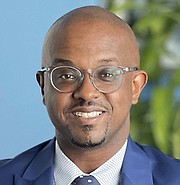Despite the changes in a company’s day-to-day workflow due to technological progress, the backbone of a successful corporation remains its trained and engaged workforce. As a result, our workforce is becoming more diverse, with employees located across the globe. The diverse nature of these employees brings numerous benefits, both intangible and tangible, to the workplace, but they also present a number of compliance challenges. Given that training is an essential pillar of a strong compliance programme, this should cover programmes and their controls, as well as the roles and responsibilities of different employees.
In this article, I will discuss the points pertaining to building and maintaining a strong compliance training programme for a workforce spread across the globe.
A systematic approach to training
Consider whether you will be able to hire instructors to facilitate your training, or if you will be delivering these opportunities internally. A trainer’s appearance may significantly influence what needs to be translated, and how it should be translated. Your audience must always remain central to your approach, while simultaneously considering key aspects of the regulatory environment that must be taught. In other words, you should have some form of a plan in place before you begin creating your materials. Companies often translate materials into three different media before making their final decision.
Make training convenient
Providing a single, live training date (or even a couple of options) is not always convenient for employees, especially in globally dispersed companies. It is just the nature of life that schedules do not always align.
Leaders of compliance training must determine whether live training is really necessary. It may be more effective for employees to meet deadlines if online modules are not highly interactive. There are several ways to structure training so that employees will not become overwhelmed, including making the content digestible, providing recordings of live sessions and pacing the delivery frequency.
Edit, review, test and track
In most cases, companies spend considerable time and effort editing and reviewing training materials, but they rarely take the time to test them prior to finalising them. Having a proper plan in place is closely related to the first tip. It is important to develop a tested strategy that you know works. If you are using software to support your training efforts, take particular note of how people from other cultures may adapt to it.
Keeping abreast of relevant laws can be challenging, but you should also make sure your standard operating procedures and employee handbooks are constantly updated in all relevant languages.
The final step is to track your effectiveness. Today we have access to a vast amount of data. Analyse these initiatives and determine how to measure the quality of your training over time. If you are experimenting with different approaches, this can be extremely helpful.
Conclusion
In short, it is likely that considering the above points will assist you in more easily training and working with employees of varied cultural backgrounds.
NB: About Derek Smith Jr
Derek Smith Jr. has been a governance, risk and compliance professional for more than 20 years. He has held positions at a TerraLex member law firm, a Wolfsburg Group member bank and a ‘big four’ accounting firm. Mr Smith is a certified anti-money laundering specialist (CAMS), and the compliance officer and money laundering reporting officer (MLRO) for CG Atlantic’s family of companies (member of Coralisle Group) for The Bahamas and Turks & Caicos.





Comments
Use the comment form below to begin a discussion about this content.
Sign in to comment
Or login with:
OpenID